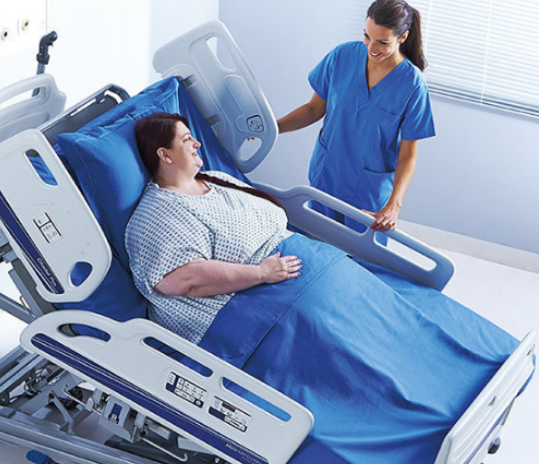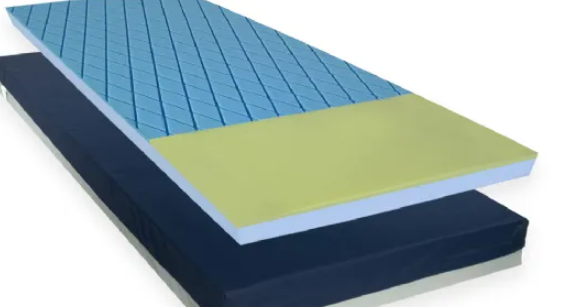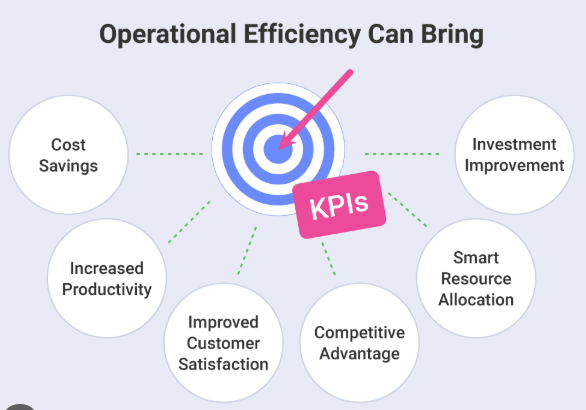Do you know why hospitals are scrambling for special beds that can handle over 1,000 pounds? Around 2 billion people worldwide carry extra weight. Standard medical beds don’t work for them anymore. The bariatric bed market hit $1.78 billion this year. It keeps climbing.
Why is the demand for bariatric medical beds increasing?
The demand for bariatric medical beds is rising fast. Several major factors shape both hospital and homecare settings.
Global Obesity Rates Are Climbing
Over 1.9 billion people worldwide are overweight. A large and growing portion are obese.
This increase drives the need for bariatric beds. Standard beds cannot support patients with higher weight.
Strong Market Growth and Investment
The bariatric beds market reached about $1.78 billion in 2025.
Experts project a compound annual growth rate (CAGR) of 9.3% from 2025 to 2033.
Certain segments are expected to grow at a CAGR of 5.18% from 2025 to 2030, with estimates rising to $392.59 million by 2030.
This growth shows more healthcare facilities are adopting these beds.
Hospitals Lead as Primary Users
Hospitals are the main users of bariatric beds. They see more obese patient admissions. These patients need complex care.
These beds reduce risks like falls and pressure ulcers. Patients above standard weight thresholds need them.

Advanced Product Features and Technology
I’ve noticed more preference for beds with higher weight capacities. They often support 700–950 lbs. Advanced designs hold over 1000 lbs.
Key features include reinforced frames, wider surfaces, and modern pressure relief systems.
Smart beds now have integrated monitoring and remote adjustability. They offer better pressure redistribution. This improves safety and dignity for patients.
Older Populations and Care Needs
The aging population faces more obesity and limited mobility. This is true in developed countries.
I recommend bariatric beds for these settings. They provide dignified care solutions.
COVID-19 Impact and Homecare Growth
The pandemic showed we need bariatric beds in ICUs. Obesity links to severe illness.
More people want remote or home-based care. This boosts demand for bariatric beds outside hospitals.
In summary, bariatric bed demand rises due to the global obesity crisis, aging populations, ongoing technology advances, and changes in hospital and homecare practices.
What can Bariatric Medical Beds offer to bariatric patients?
Bariatric medical beds offer major benefits for obese or overweight patients. They support safety and dignity in care settings.
Enhanced Comfort and Pressure Relief
Bariatric beds use high-density foam or air mattresses. These spread out weight across the surface. This reduces discomfort. It also lowers the risk of pressure ulcers.
The beds are wider than standard options. Patients get more space to find a comfortable position. Sleep quality improves.

Increased Safety and Fall Prevention
Reinforced frames support higher weight capacities. Most accommodate 700–950 lbs or more.
Built-in safety rails and low bed-entry designs reduce the chance of falls. This protects patients during bed entry or exit.
Medical Complication Prevention
Patients can adjust positions with powered controls. This helps lower the risk of bed sores. It improves circulation. It also aids those with breathing difficulties.
Adjustable head and knee elevation features ease symptoms. I recommend these for patients with sleep apnea or respiratory problems like COPD.
Easier Patient Transfers and Mobility
Adjustable height settings make transfers smoother and safer. This benefits both patients and caregivers.
Based on my experience, these features help patients with limited mobility. They also help those who need assistance during bed exits and repositioning.
Durable and Long-Lasting Design
Heavy-duty materials ensure the bed stays stable and functional. This holds true even with long-term, high-frequency use.
I suggest this durability for safe, ongoing patient care. It works well in home care and hospital settings.
Dignified Patient Experience
Bariatric beds provide stable, comfortable sleep surfaces. They create safer environments. This helps maintain patient dignity. It supports independence and quality of life throughout their care journey.
Benefits of Bariatric Medical Beds
Bariatric medical beds offer many clinical, operational, and economic benefits. I believe both patients and healthcare facilities gain from these specialized beds.
Enhancement of Patient Mobility and Independence
Height adjustment features help patients sit up, transfer, or reposition themselves. This means less need for caregiver help.
Advanced exit alarms alert staff if a patient tries to leave the bed alone. This lowers fall risk.
Adjustable functions and tilting mechanisms let patients move on their own. Based on my experience, this builds self-confidence and personal dignity.
Patient Safety and Comfort
Wide frames and high weight capacities (up to 1000 lbs on many models) provide safety and comfort. These beds meet the needs of larger patients.
Ergonomic siderails and the Boostless™ backrest system reduce slipping, sliding, and friction. This helps prevent skin injuries.
Multiple position settings offer custom comfort. They also help reduce pressure ulcer occurrence.
Reduction in Caregiver Injuries and Physical Strain
Motorized and hydraulic assist systems reduce the physical burden on caregivers. This helps prevent musculoskeletal injuries from frequent lifting and repositioning.
These beds allow safer, more efficient patient handling. I recommend them because they support better caregiver well-being and job satisfaction.
Operational Efficiency and Resource Optimization
Bariatric beds give patients greater autonomy. This reduces the need for constant staff intervention. It allows more effective use of hospital resources.
Lack of proper bariatric equipment remains a major barrier. 75% of healthcare professionals report this issue as a top challenge. Proper bed availability is essential.
Cost Savings and Resource Planning
The durable design of bariatric beds cuts down on replacement costs. It also reduces equipment breakdowns. This means long-term savings.
Hospitals can forecast bariatric bed needs based on utilization data. This helps avoid overspending on unused equipment. It also prevents poor outcomes from shortages.

Market and Utilization Data
The global market for bariatric beds reached $282.13 million in 2022. Experts expect it to grow at a 5.1% CAGR through 2030.
Beds with 500–700 lb capacity dominate. They captured over 41% of the market share as of 2022.
Global obesity rates are rising. The population is aging. These factors are driving demand for these specialized beds across hospital and home care sectors.
Examples of Advanced Features in Bariatric Beds
Electric motors and hydraulic systems provide smooth height and tilt adjustments.
Lockable, adjustable wheels make patient transfers safer and easier.
Fiber-reinforced construction creates lighter weight and greater durability.
Multiple built-in storage compartments add convenience.
Ergonomic side rails help prevent accidental falls. They also improve patient access.
Summary of Core Benefits
Improved safety, dignity, and comfort for patients
Greater independence and mobility
Lower risk of pressure ulcers and falls
Fewer caregiver injuries and improved staff retention
Major operational cost savings
Market growth driven by demographic shifts and clinical necessity
The right equipment can transform a patient’s entire care experience. Bariatric beds aren’t just furniture—they’re dignity, safety, and independence rolled into one essential tool. As our world changes and needs grow, I’m convinced these beds will become standard care, not specialty items. The investment isn’t just financial—it’s in human comfort and healing.
